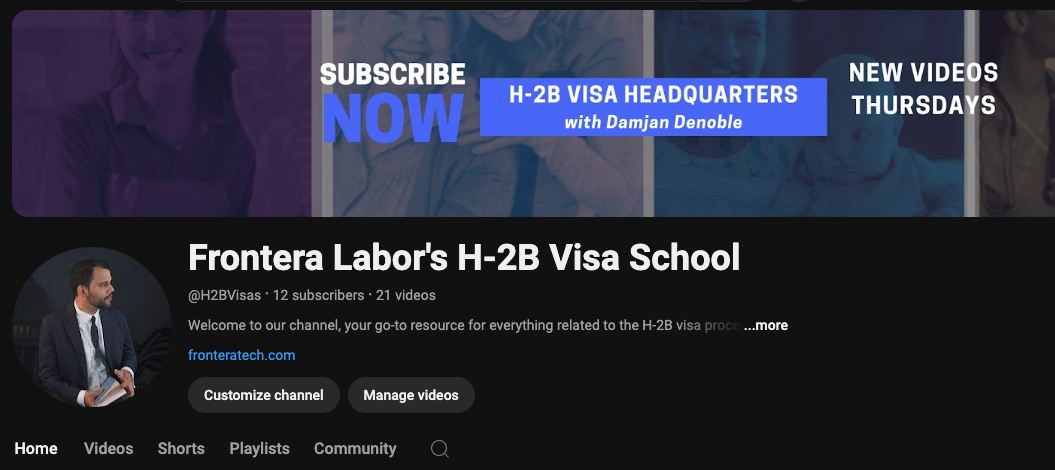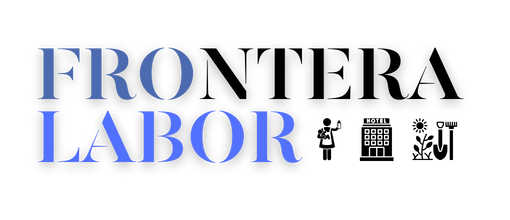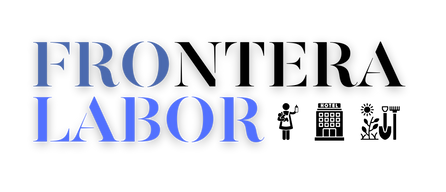The Ultimate Guide to Bringing a Nanny to the U.S. with an H-2B Visa
Welcome to Frontera Labor! If you’re considering hiring a nanny from abroad, navigating immigration options can be complex. Families often explore the J-1 au pair visa, green cards, and other alternatives before discovering the versatility of the H-2B visa. This comprehensive guide provides detailed insights on how the H-2B visa program can help families transition from au pairs to full-time professional nannies, overcome regulatory hurdles, and secure long-term childcare solutions.
What is the H-2B Visa?
The H-2B visa is designed for temporary, non-agricultural workers, including professional nannies and caregivers. It differs significantly from the au pair J-1 visa, offering flexibility in hours, duties, and longer-term arrangements of 1 to 3 years. Contrary to misconceptions, the H-2B visa is well-suited for skilled childcare professionals who meet families’ evolving and specific needs.
Key Requirements for Employing an H-2B Nanny
To successfully employ an H-2B nanny, your application must clearly define a temporary, “one-time” need with specific start and end dates. Examples include periods when a child is not yet school-aged, or when family responsibilities or careers temporarily intensify.
Essential criteria:
- Temporary Need: Clearly define employment duration (1 to 3 years).
- Eligible Countries: Nannies must originate from countries on the official H-2B eligibility list.
- Employer Entity: Applicants must use a sole proprietorship or LLC, obtain necessary employer identification numbers, state workforce agency registrations, and payroll setups.
- Financial Readiness: Be prepared to demonstrate financial capability for consistent payroll, lodging, and compliance with regulatory requirements.
PRO TIP: Ask for the full period of time on your initial application. If you ask for just one year and then try to extend it, you may well run into a DOL denial.
Transitioning from Au Pair (J-1 Visa) to H-2B Nanny
Families transitioning from a part-time au pair to a full-time nanny role often encounter Department of Labor (DOL) scrutiny. However, recent BALCA decisions like MysticAngels, LLC (2023-TLN-00122) and HelpingHands II (2024-TLN-00066) have clarified that prior part-time employment, such as an au pair, does not disqualify a family from obtaining an H-2B certification for expanded, full-time childcare needs.
In a recent successful case, Jane Doe transitioned from employing a part-time au pair (25-45 hours/week) to needing a full-time nanny (40-60 hours/week). Leveraging the above case law, we demonstrated that the prior part-time arrangement was insufficient due to increased childcare responsibilities and non-traditional work schedules. This strategic approach successfully overcame the DOL Notice of Deficiency (NOD) and secured certification.
Finding Your Ideal Nanny
Identifying the right nanny impacts your H-2B application’s success. Families targeting a specific individual must navigate visa lotteries carefully and manage tighter timelines. Conversely, flexibility and openness to recruiting nannies from eligible countries increase your application’s chances of success, especially from countries with additional visa allotments like Honduras, Guatemala, and El Salvador.
In our experience, if you are intent on bringing in a specific nanny then you are wise to also have one or two backups. The consular interview process is the most opaque step of the entire H-2B visa journey. A denial at an interview is very hard to overcome, because there are few ways to actually communicate with consular officers. We have had cases where initial candidates have been denied on their first interview, only to be approved when going through a second time. We have also had cases where an interview approval led to a denial after the fact. We have of course seen denials that cannot be overturned. In each case, we have prepared the family for the outcome and worked with them to identify additional candidates for their needs.
That being said, the right nanny should be thought of as not only a nanny that is a good cultural fit, but also a nanny that has the best chance of getting through a consular interview.
PRO TIP: You should make sure your nanny candidate is not directly related to you or someone in your household. This will almost always lead to a denial.
H-2B Application Process and Timeline
The application process involves several stages:
- Department of Labor (DOL): File a prevailing wage determination about three months before targeted filing dates (January 1 or July 1). Subsequently, obtain labor certification by proving the absence of suitable domestic workers.
- U.S. Citizenship and Immigration Services (USCIS): After DOL certification, submit applications to USCIS, addressing potential inquiries into employment history and financial capacity.
- Department of State (DOS): Schedule and complete consular interviews, acknowledging variable processing timelines and requirements across consulates.
The Three-Cycle Strategy: Maximizing Your Chances of Success
Given the competitive nature and complexity of the H-2B visa process, Frontera Labor employs a proactive “three-cycle strategy” to enhance your chances of success:
- First Cycle (Initial Application):
- Apply during the January 1 lottery cycle for employment starting in April or July 1 for employment starting in October.
- Aim for approval, but expect potential setbacks due to high demand and lottery outcomes.
- Complete all DOL requirements to secure certification.
- Second Cycle (Subsequent Application):
- If unsuccessful initially, apply again in the next available cycle (July or January).
- Utilize prior cycle experience and certifications to address deficiencies and strengthen your application.
- Higher probability of success due to improved documentation and application refinement.
- Third Cycle (Final Adjustment):
- In the rare event that both initial attempts are unsuccessful, apply for a third cycle.
- Leverage all previous documentation and experiences to present the strongest possible case.
- Typically results in a successful outcome due to cumulative adjustments and improvements.
By planning across multiple application cycles, families significantly improve their chances of securing necessary certifications and successfully hiring their desired nanny.
Responsibilities as an H-2B Employer
Employing an H-2B nanny involves considerable administrative and regulatory responsibilities:
- Secure an Employer Identification Number (EIN).
- Register with state workforce and unemployment insurance agencies.
- Comply with payroll obligations and wage laws.
- Arrange lodging and reimbursements for visa and travel expenses.
- Prepare for potential audits and detailed record-keeping.
These obligations significantly differ from au pair sponsorship arrangements, demanding active involvement and organizational skills from employers.
Choosing Your Employer Entity: LLC vs. Sole Proprietorship
Families typically select between an LLC and a sole proprietorship:
- LLC: Provides greater liability protection, privacy, and organizational clarity.
- Sole Proprietorship: Easier setup, but less protective against liabilities and potentially attracting more scrutiny.
These days, we recommend a sole proprietorship in almost all cases. With experience, we have found that sole proprietorships make payroll and tax-filing much easier for US employers.
Special Considerations and Best Practices
Hiring friends, family, or former au pairs under the H-2B program requires careful consideration due to heightened scrutiny by USCIS and consular officers. Clearly differentiate previous employment arrangements (e.g., au pairs) from full-time nanny roles in your documentation.
Best practices to successfully address regulatory challenges:
- Stay current on BALCA decisions to strengthen your legal strategy.
- Provide comprehensive documentation and detailed explanations of changing childcare needs.
- Clearly differentiate roles and responsibilities from prior part-time employment.
- Highlight economic or logistical reasons necessitating a full-time nanny.
Conclusion: Strategic Legal Advocacy
Successfully navigating the H-2B visa process involves understanding regulatory complexities, leveraging relevant case law, and meticulous documentation. Frontera Labor specializes in strategically overcoming these challenges, ensuring your family’s unique childcare needs are met reliably and lawfully.
For personalized guidance, schedule your free consultation today. Frontera Labor is committed to supporting your family’s childcare solutions, making your H-2B journey smooth and compliant.





